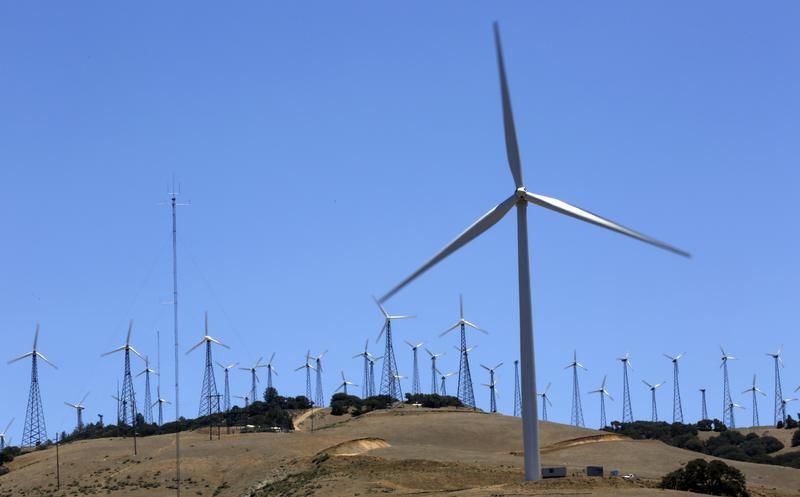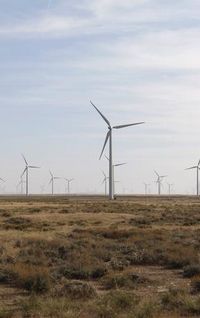My favourite wind yield story will always be the annual British Wind Energy Association (BWEA) sailing day regatta on the Solent a few years back. Record attendance but no wind. Event cancelled. On a more serious note the law suits are starting to fly over the fallout from the Texas storm in February. Renewable yields are determined by forces outside the human control. But mitigating the risks from unforeseen weather events puts the issue back within the ambit of human management skills.
The weather event in Texas was not due to the lack of weather, ie no wind or sun, but due to too much weather – a severe storm in a part of world not used to such cold snaps. But for generators, which rely on the weather for their fuel source, the risks merge into one. Hedges between developers and financial institutions provide an underpinning for the cashflow of renewable generators but they have been exposed by recent events. Is unusual weather a reason for calling force majeure or should be it part and parcel of the renewable generation sector?
The Texas storm was so severe it led to a host of energy facilities – thermal and renewables – freezing and going offline, leading to a generation shortage just at a time when demand soared due to the cold weather. Regulator the Public Utility Commission of Texas (PUCT) then set a price at US$9,000/MWh to encourage generators back online as quick as possible and to reduce demand. This market dislocation led to some big losses on those generators and suppliers with commitments to sell power to hedge counterparties but with their production down.
Inevitably, the law suits have started between asset owners and the hedge counterparties. The definition of a force majeure event is at the heart of the debates. Developers have called force majeure and say their commitments are not valid for that period of time. But someone has to pay the US$9,000 bill.
The suit between developer Innergex and hedge provider Citi on the 200MW each Shannon Wind and Flat Top Wind projects details their force majeure provisions. The Energy Agreement, it says, excludes the loss or failure of a seller's supply from the definition of force majeure. This is presumably to take account of the variable nature of renewable generation. But Innergex says the carve-out is not relevant to the February storm issue as "by its plain language it applies only to the seller's and not to industry wide circumstances".
Any weather event will have widespread consequences. But Innergex says lack of wind is not a force majeure "but other unanticipated events that prevent performance in whole or in part do constitute force majeure".
The contract is a Firm (LD) Energy product, ie where delivery may be excused by force majeure. The Firm (No Force Majeure) Energy contract does not excuse delivery during force majeure events. Instead, under Firm (LD) Energy, the developer must pay the counterparty a replacement price for any shortfall if force majeure is not called. But Innergex says the Energy Agreement defines force majeure without reference to particular excusing events and therefore "it is interpreted to include all events embraced by the general language of the force majeure clause".
Innergex says "the February 2021 storm and PUCT's actions in response to that storm were not anticipated when the Energy Agreement was executed and squarely fall within that clause [force majeure]". The due legal process will decide. Weather is unpredictable but storm weather is more unpredictable.
In another lawsuit, bought by asset owner Canadian Breaks, JP Morgan put the case for the hedger counterparty. "The agreement is clear that the energy Canadian Breaks is required to sell JP Morgan is energy from Texas' open market, without regard to who produced it, rather than energy generated specifically by Canadian Breaks."
Clearly, the storm has exposed fault lines in the Texas power market and the risk mitigations put in place – both physically given the fact so many assets froze and financially in terms of who pays the bill for the spike in power prices.
Relying solely on a financial hedge going forward is clearly not enough. Back-up is required. Single asset developers cannot be expected to search the country for power supplies if their assets go down, unlike the big hedge counterparty players who have a better chance to source power.
But at the same time they can presumably limit or cap their exposures under the contract. They might even joint-venture with the very same hedge provider to source alternatives sources of power in times of crisis. Certainly, developers should be a looking at arrangements to cover themselves when the unexpected occurs. Could they pool their resources? Lenders to projects will presumably insist on a decent Plan B and Plan C. The summer is coming, what price another unexpected weather event this year in, say, California?










